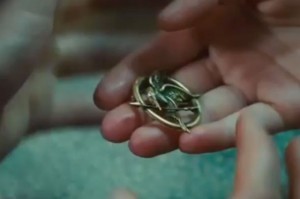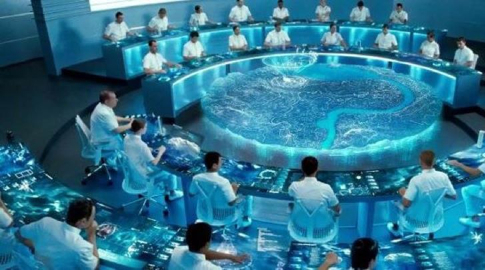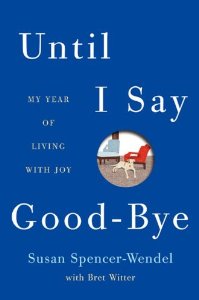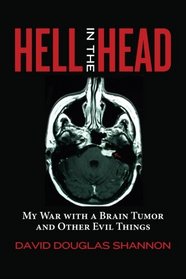The Hunger Games: Catching Fire is scheduled for release this Friday. In preparation, I watched The Hunger Games again. I was reminded of a few points that I thought worked really well in the film adaptation and a few more that fell flat. Be forewarned that this review contains spoilers, so please stop reading now if you have not yet seen the first film.
First, a few things that didn’t work well:
1. The mockingjay pin
 I understand the need to streamline the number of characters for the movie adaptation. Axing Madge was one thing, but the new backstory of Katniss’ mockingjay pin is ludicrous: Katniss finds the pin at the marketplace and gives it to li’l sis Prim as a good luck charm to protect Prim from anything bad happening to her at the Hunger Games reaping. Prim is selected despite her name being entered only once in the pool. Katniss volunteers to take her place and when Prim comes to say goodbye, she gives the pin back to Katniss to protect her from anything bad happening. Really, Prim? Fifteen minutes ago the mockingjay pin proved itself to be an epic failure as a good luck charm and you are giving it back to Katniss? And Katniss, you are accepting it?
I understand the need to streamline the number of characters for the movie adaptation. Axing Madge was one thing, but the new backstory of Katniss’ mockingjay pin is ludicrous: Katniss finds the pin at the marketplace and gives it to li’l sis Prim as a good luck charm to protect Prim from anything bad happening to her at the Hunger Games reaping. Prim is selected despite her name being entered only once in the pool. Katniss volunteers to take her place and when Prim comes to say goodbye, she gives the pin back to Katniss to protect her from anything bad happening. Really, Prim? Fifteen minutes ago the mockingjay pin proved itself to be an epic failure as a good luck charm and you are giving it back to Katniss? And Katniss, you are accepting it?
My suggestion: It would have worked better for Mrs. Everdeen to give Katniss the pin when she and Pris came to say goodbye. She could have told Katniss the story about it having belonged to a friend of hers who was a tribute years before and she hoped it would bring Katniss luck.
2. The bakery scene
 In the book, the scene where Peeta tossed a loaf of burnt bread to Katniss occurred shortly after the death of Katniss’ father more than five years earlier. Katniss is a little girl nearly starving to death. The scene does not make sense once Katniss is a young woman proficient at supporting herself and her family by hunting in the woods outside of District 12.
In the book, the scene where Peeta tossed a loaf of burnt bread to Katniss occurred shortly after the death of Katniss’ father more than five years earlier. Katniss is a little girl nearly starving to death. The scene does not make sense once Katniss is a young woman proficient at supporting herself and her family by hunting in the woods outside of District 12.
My suggestion: it would have worked better to cast a couple of younger actors to film this scene.
3. Tracker jacker hallucinations
 The tracker jacker scene is critical to the story, but I did not care for the way it was executed. Seeing Katniss’ point of view as out of focus was all right, but having Caesar Flickerman walk into her hallucination with an explanation of the effects of tracker jacker venom was incongruous, and the explosion of her cabin just did not make sense.
The tracker jacker scene is critical to the story, but I did not care for the way it was executed. Seeing Katniss’ point of view as out of focus was all right, but having Caesar Flickerman walk into her hallucination with an explanation of the effects of tracker jacker venom was incongruous, and the explosion of her cabin just did not make sense.
My suggestion: Caesar Flickerman’s comments could have been handled as a quick cutaway to the Hunger Games program instead of part of the hallucination. Leave out the exploding room.
4. Mutts
 In the book, the mutts sent to pursue the last few remaining players had facial characteristics of the dead tributes. The film version generic mutts were not nearly as menacing as the picture the book painted in my imagination.
In the book, the mutts sent to pursue the last few remaining players had facial characteristics of the dead tributes. The film version generic mutts were not nearly as menacing as the picture the book painted in my imagination.
My suggestion: Stepping up the CGI to make the mutts look more like the slain tributes could have been a truly terrifying scene.
Now, film elements that worked extremely well:
1. The control room
 Since the book was written strictly from Katniss’ point of view, we did not know anything at all about the Hunger Games control room. The depiction of the control room technology in the movie, particularly in contract to the condition of life in District 12, was outstanding. I also liked the parachutes that delivered sponsor gifts (although I had always imagined them as silent – seems like the tinkling sound could attract the unwanted attention of other tributes).
Since the book was written strictly from Katniss’ point of view, we did not know anything at all about the Hunger Games control room. The depiction of the control room technology in the movie, particularly in contract to the condition of life in District 12, was outstanding. I also liked the parachutes that delivered sponsor gifts (although I had always imagined them as silent – seems like the tinkling sound could attract the unwanted attention of other tributes).
2. Woody Harrelson as Haymitch
 When Woody Harrelson was cast as Haymitch, I remember thinking it was a particularly brilliant choice. And it was. Overall, I think the casting directors did an outstanding job bringing the novel characters to the screen.
When Woody Harrelson was cast as Haymitch, I remember thinking it was a particularly brilliant choice. And it was. Overall, I think the casting directors did an outstanding job bringing the novel characters to the screen.
3. The early introduction of President Snow
 In the books, President Snow does not make an appearance until Catching Fire. It worked very well to introduce him earlier on, particularly for the pre-game festivities.
In the books, President Snow does not make an appearance until Catching Fire. It worked very well to introduce him earlier on, particularly for the pre-game festivities.
4. The punishment of Seneca Crane
 This is another scene that was not possible from Katniss’ first person narrative in the novel but was a splendid addition to the movie. Watching Seneca Crane approach a bowl of lethal nightlock berries in an otherwise empty yet opulent room – and realize its implications – sent chills down my spine.
This is another scene that was not possible from Katniss’ first person narrative in the novel but was a splendid addition to the movie. Watching Seneca Crane approach a bowl of lethal nightlock berries in an otherwise empty yet opulent room – and realize its implications – sent chills down my spine.
Overall, I thought the filmmakers did an excellent job adapting the movie to film, and I am looking forward to seeing what they did with The Hunger Games: Catching Fire.



